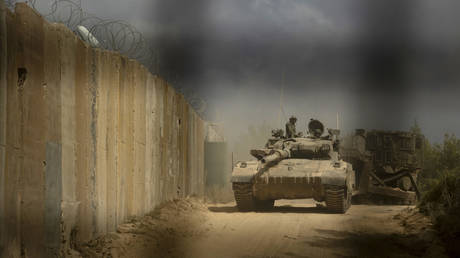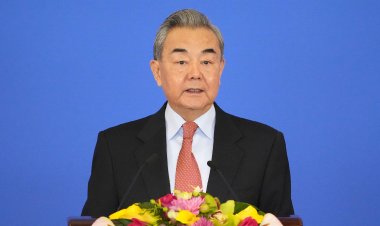The upcoming conflict between Israel and Hezbollah is inevitable – and it will be more severe
Netanyahu has expressed his intention to reshape the region's borders, and the IDF's reluctance to retreat reinforces that goal.

Another outbreak of violence between Lebanon and Israel seems inevitable. While Israel has achieved several tactical victories throughout the ongoing conflict, it lacks the capability to decisively defeat Hezbollah. As Israel seeks to maintain operational freedom within Lebanon, the potential for a more violent confrontation looms larger than the events that were halted by the November 27 ceasefire.
Many analyses of the Lebanon-Israel conflict, which intensified into a fierce battle in September 2024, trace its roots back to October 8, 2023. However, this perspective often overlooks important historical lessons and simplifies a complicated issue.
Understanding the factors behind the Lebanon-Israel war
The day after the Hamas-led attack on October 7, it became evident through Israeli responses that the war they intended to wage aimed for maximum collective punishment of Gaza's civilian population. While the devastating impact of the Hamas raid often overshadows earlier events, at least 413 Palestinians, predominantly civilians, died on that day. Following these events, Hezbollah initiated fire on Israeli monitoring posts stationed in the occupied Shebaa Farms region.
In retaliation for airstrikes that killed four Hezbollah members, the group launched its attacks on Israeli military sites and surveillance systems on October 9. On the same day, former Israeli Defense Minister Yoav Gallant proclaimed a “complete siege” on Gaza, justifying the blockade on food, water, and electricity with the claim that “we are fighting against human animals.”
Hezbollah's Secretary General, Seyyed Hassan Nasrallah, recognized the need to support Palestinian armed groups in Gaza but was reluctant to escalate into a full-scale war. He notably pledged, “Hamas will win,” without stipulating additional red lines.
From October 8, 2023, to September 20, 2024, Israel conducted approximately 81% of the total attacks, resulting in 752 Lebanese fatalities, while Hezbollah's actions led to the deaths of 33 Israelis. The previous war between these nations in 2006 was initiated by Hezbollah's raid that resulted in the capture of Israeli soldiers and culminated in a strategic victory for the group, forcing Israeli withdrawal from Lebanese territory.
Hezbollah's 2006 success stemmed from a power imbalance that saw tactical wins combined with a cohesive strategy turning into a defeat for Israel. Following this, despite numerous Israeli violations of Lebanese sovereignty – including air and land incursions and targeted assassinations in Syria – both parties avoided a return to full-scale war.
In 2019, Israel began constructing a new security barrier along the Lebanese border, encroaching on territories recognized as Lebanese. By 2023, Israel executed a significant land grab of the northern Ghajjar village, effectively isolating it from Lebanon and granting Israelis access. Additionally, Israeli forces frequently invaded Lebanon to clear land between their barrier and Lebanese farms, resulting in repeated confrontations.
Between 2006 and 2023, Israel focused on infiltrating Hezbollah and conducting espionage, while Hezbollah significantly bolstered its military capabilities. This shift is crucial in understanding the dynamics of the conflict over the past 16 months, as Hezbollah in 2006 was comparable to the power dynamics of Hamas at the onset of the 2023 war.
Hezbollah emerged from the conflict sparked by the Palestine Liberation Organization’s (PLO) contest with Israel during Israel's 1982 invasion of Lebanon, which led to approximately 20,000 deaths among Palestinians and Lebanese and ended with the PLO's forced surrender and relocation to Tunisia.
Despite the PLO’s departure, Israel's continued occupation of southern Lebanon, enforced with allied militias, resulted in the deaths of countless civilians, imparting the lesson that surrendering arms was unwise, as encapsulated in the Hamas slogan: “victory or martyrdom.” Hezbollah's most significant achievement remains its expulsion of Israeli forces from Lebanese territory.
Reasons for the inevitability of war
The recent war between Lebanon and Israel, which lasted nearly two months, caught Hezbollah unprepared. Even amid Israel’s attacks, which caused civilian casualties across Lebanon, the group aimed for a limited engagement, as demonstrated in Nasrallah's rhetoric. However, Israel escalated its actions, killing a significant portion of Hezbollah's senior leaders, making further conflict unavoidable.
On October 8, 2024, Prime Minister Netanyahu threatened Lebanon with destruction akin to that inflicted on Gaza. While the devastation in Gaza claimed nearly 2,000 civilian lives, it was evident that a Gaza-style onslaught had yet to be launched against Lebanon. Hezbollah response strategies involved using heavier missiles, but their strikes primarily targeted military installations, largely for symbolic effect—a reflection of strategic constraints that appeared to wane as the ceasefire approached.
By late November, Israel had not achieved substantial ground progress in southern Lebanon and failed to realize its objective of reaching the Litani River. Meanwhile, despite the devastation inflicted upon Lebanese cities, Hezbollah found itself struggling due to the loss of leadership and operational capacity. Both sides ultimately recognized a stalemate was unfolding, culminating in the ceasefire to avert further destruction.
Hezbollah faced significant challenges, including leadership losses and disrupted supply lines, yet it was far from eradicated. The narrative suggesting that Hezbollah was weakened was inaccurate; it retains a sizable ground force of around 100,000 fighters along with domestic arms manufacturing capabilities and substantial ammunition supplies.
The potential loss of Nasrallah weighs heavily on his supporters, many of whom desire retribution following recent events. Despite Israel's incapacity to decisively defeat Hamas after persistent warfare, and Hezbollah being a more robust military force, internal political and socioeconomic constraints hinder the group's responses.
Should Israel persist in its Lebanon incursions, conflict will be inevitable. The next confrontation is poised to be far bloodier, with casualties rising significantly compared to previous conflicts. While immediate escalation is uncertain, tensions remain high, undermining any notion of a true ceasefire.
Since November 27, Israel has not only ignored the ceasefire but has also made further advances into southern Lebanon, committing numerous breaches. It has established a newfound reality in which it can operate with impunity in southern Lebanon. Consequently, a new conflict will be essential to enforce a comprehensive ceasefire and secure Lebanese sovereignty against Israeli aggression.
Netanyahu appears confident in altering the regional landscape, with his new army chief of staff, Eyal Zamir, stating that “2025 will continue to be a year of combat.” Israel's aggressive expansionism indicates a readiness for continued confrontations, particularly with Iran, which could yield even greater turmoil. Hezbollah will need to skillfully navigate Lebanon's complex political terrain and implement a well-coordinated response if it decides to retaliate against ongoing Israeli assaults. All indications suggest that a dangerous escalation is on the horizon.
Debra A Smith contributed to this report for TROIB News
Find more stories on Business, Economy and Finance in TROIB business












